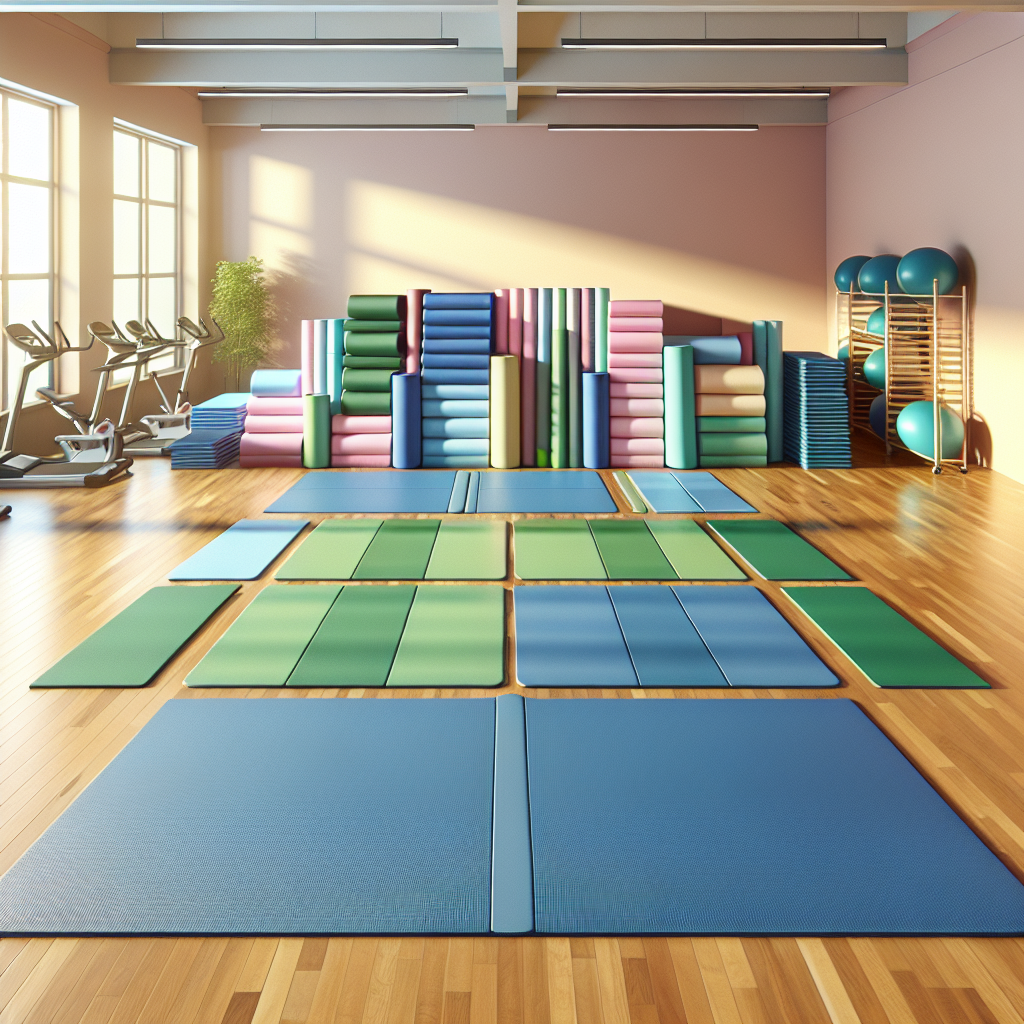
Creating a home gym can be an exciting undertaking, offering you the convenience of exercising whenever you want while avoiding the crowded, often intimidating atmosphere of commercial gyms. One essential component that you should consider when designing your home workout space is the exercise equipment mat. Though it may seem like a minor detail, the right mat can substantially enhance your exercise experience and protect your floors and equipment. This ultimate guide will help you navigate the process of choosing the right exercise mat for your home gym.
Why You Need an Exercise Mat
1. Floor Protection
One of the primary functions of an exercise mat is to protect your flooring from damage. Heavy weights, cardio machines, and other exercise equipment can cause scratches, dents, or even cracks in hardwood or tile floors. A mat provides a protective barrier that absorbs impact and helps maintain the integrity of your flooring.
2. Stability and Safety
Exercise mats provide a stable surface for various workouts. They prevent your equipment from sliding around, which can lead to accidents and injuries. A good mat can also reduce the risk of slipping during high-intensity workouts or yoga sessions, offering additional traction and grip.
3. Noise Reduction
If you’re working out in an apartment or shared space, noise can be a concern. A quality exercise mat can help dampen sound, reducing the noise from dropped weights or equipment in motion, allowing you to exercise without disturbing others.
4. Comfort and Cushioning
A mat can add comfort to your workouts by providing extra cushioning, especially during floor exercises, yoga, or Pilates. This cushioning can alleviate stress on joints and muscles, enhancing your overall workout experience.
Key Factors to Consider When Choosing an Exercise Mat
1. Material
Mat materials vary widely, which can influence durability, comfort, and safety.
- Rubber: Durable and heavy-duty, rubber mats are ideal for weightlifting and high-impact workouts. They provide excellent traction but may be heavier and more difficult to reposition.
- Foam: Soft and cushioned, foam mats are excellent for low-impact exercises and stretching but may not hold up as well under heavy equipment.
- PVC: These mats are often lighter, easy to clean, and can be an effective option for yoga or Pilates. Be mindful of quality, as cheap PVC mats can wear out quickly.
- TPE: Thermoplastic elastomer (TPE) mats are eco-friendly and provide excellent cushioning. They offer a balance between weight and durability, making them suitable for various workout types.
2. Thickness
The thickness of your mat is crucial depending on the type of workouts you perform:
- Thin Mats (1/8" to 1/4"): Ideal for stability during weightlifting and various cardio activities.
- Medium Mats (1/4" to 1/2"): Suitable for general fitness, yoga, and Pilates, offering moderate cushioning without sacrificing stability.
- Thick Mats (1/2" and above): Provide maximum comfort and support for floor exercises, but might not be the best when stability is key, such as when lifting heavy.
3. Size
Consider the size of your workout area and the equipment you plan to use. Exercise mats come in a range of sizes, from standard yoga mats to larger rolls for covering more extensive workout spaces. Ensure the mat is large enough to accommodate your activities and equipment without hanging over the edges.
4. Ease of Cleaning and Maintenance
Choose mats that are easy to clean and maintain, especially if you sweat during workouts. Look for materials that resist stains and can be easily wiped down or washed with mild soap and water.
5. Portability
If you plan to move your mat around frequently, consider its weight and whether it’s foldable or can be rolled up. Mats designed for portability often come with carrying straps or bags, making them easier to transport.
6. Use Case
Identify the primary use of the mat. Different workouts require different features:
- Yoga and Pilates: Look for mats that offer grip and cushioning.
- CrossFit and HIIT: Heavy-duty mats made of rubber are ideal to withstand rigorous exercises.
- Weightlifting: A thicker mat can help absorb shock and protect your flooring.
The Bottom Line
Choosing the right exercise equipment mat for your home gym involves balancing comfort, durability, and functionality. Consider your workout style, the equipment you plan to use, and your flooring needs to make an informed decision. Investing in a quality mat will enhance your exercise experience, protect your home, and contribute to a safe and effective workout environment. Take the time to research your options and select a mat that meets your needs, ensuring that your home gym remains a motivating and efficient space for achieving your fitness goals.




